Growing and Roasting Sunflower Seeds
ave you ever been in the middle of a garden project and suddenly wondered how you got there? I pondered this question as I began what felt like my 10th hour of separating sunflower seeds from the chaff. Actually, it had only been 20 minutes, but after picking each seed out one-by-one, it certainly felt like time had slowed to hours instead of minutes.
It really began over 10 years ago when I planted my first – and for a long time, only – mammoth sunflower. The flower was so huge that my now-teenage son, who is otherwise oblivious to everything in the garden, has asked each year when we are going to grow another one. I've tried, but to no avail. I can easily grow the branching sunflowers and modestly-sized sunflowers, but we have never achieved the truly mammoth-sized sunflower head after that first year. Each year, my son would tell me that it wasn't as big as that first one. (Quite a few times, I've wondered whether the mammoth sunflower was larger in a small child's memory than reality.)
But I came close this year. My entire yard is on drip irrigation now, which makes planting seeds straight into the ground more challenging. But when a yarrow died, I stuffed some organic ‘Titan' sunflower seeds into the same location. I didn't expect much, but they sprouted! And grew and grew and grew. Our family really enjoyed watching the plants grow tall, form their beautiful blooms, and then turn to seed. We ended up with have three big sunflower heads to harvest.
The ‘Titan' sunflower (Helianthus annuus)grows to about 12' tall with flower heads of up 18-24” across and edible striped seeds. Other large sunflower varieties include ‘Mammoth Russian,' ‘Mammoth,' ‘Mammoth Grey Stripe', and ‘Mongolian Giant.' (You've probably noticed a naming theme here.) Sunflowers prefer full sun (6-8 hours a day) and well-drained, rich soil. Follow the planting directions on the seed package. Although sunflower seeds can be started indoors, some people recommend sowing them directly into the ground, however, in order to grow bigger sunflowers. This helps to ensure that the taproot doesn't become stunted if transplanting is delayed. Stake the plants because they will become top heavy and prone to leaning or falling over.
I usually leave my sunflower seeds for the birds, but this year I decided to at least try roasting them. I'm not sure why I thought that was a good idea given that no one in my family eats sunflower seeds. “It would be easy,” I thought, after doing some research. Simply remove the seeds and roast them!
As the petals of the sunflower begin to yellow and brown and the head begins to droop, it is time to beginning checking on the progress of the ripening seeds. Birds and squirrels know this too! To beat them to the seeds, you can cover the flower with a mesh or paper bag while the seeds continue to ripen. Alternatively, you could cut the head from the stem, leaving about 12” of the stem, and bring the head inside to dry. I checked the seeds regularly by picking one or two. I was surprised to find that although the shells looked large and ready to harvest, they were empty. I then waited a few more days until I started finding seeds inside the shells.
When the seeds are ready to harvest, you should be able to remove them by brushing or rubbing your hand across the face of the flower. I don't know if I waited too long (or too little), but some seeds were harder to remove at different spots on the flower head. Maybe the heads were so big that the seeds ripened unevenly across the head. Removing the seeds, however. was relatively easy compared to the next step – sorting the seeds from the chaff. Again, maybe I harvest the seeds too late, but a lot of flower head detritus, or chaff, come off with my seeds. I tried various methods to ease the sorting process, including rubbing the seeds across wire mesh. I also tried tossing the seeds in the air, hoping the breeze would catch the lighter chaff and blow it away. No such luck. All I did was a make a mess and lose many seeds through the slats of the deck. My canine supervisors found this all very interesting, but they didn't eat any! I grumpily pictured the giant sunflowers growing beneath the deck next summer and carrying it into the sky like the beanstalk in Jack in the Beanstalk. Ultimately, I ended up picking out the seeds, one-by-one. I ended up with about 4 cups of seeds from one flower head.
There are a variety of roasting recipes on the internet. I wanted to try salted, roasted seeds so I put the 4 cups of sunflower seeds (in hulls) in a bowl of water with 1/3 cup salt and soaked them for about 8 hours (most recipes say overnight). I then dried them with a paper towel and spread on a baking sheet lined with parchment paper. I roasted them in a 300 degrees F oven for about 40 minutes. The seeds roasted perfectly, but the salt was barely discernible so perhaps I should have added more salt or soaked them longer.
It was an interesting experiment, but candidly, not one I will repeat. I love planting sunflowers, but in the future, the birds can have the seeds!


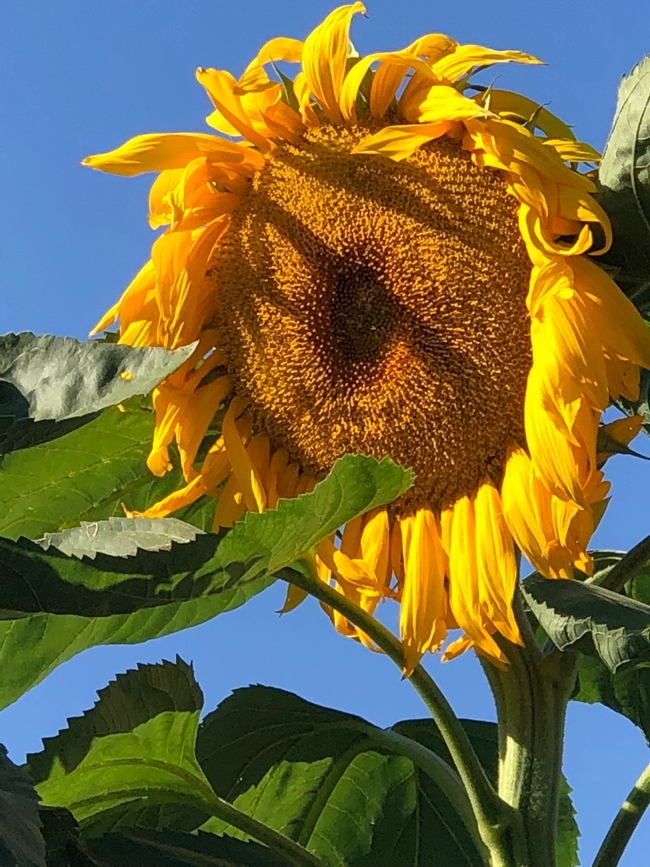
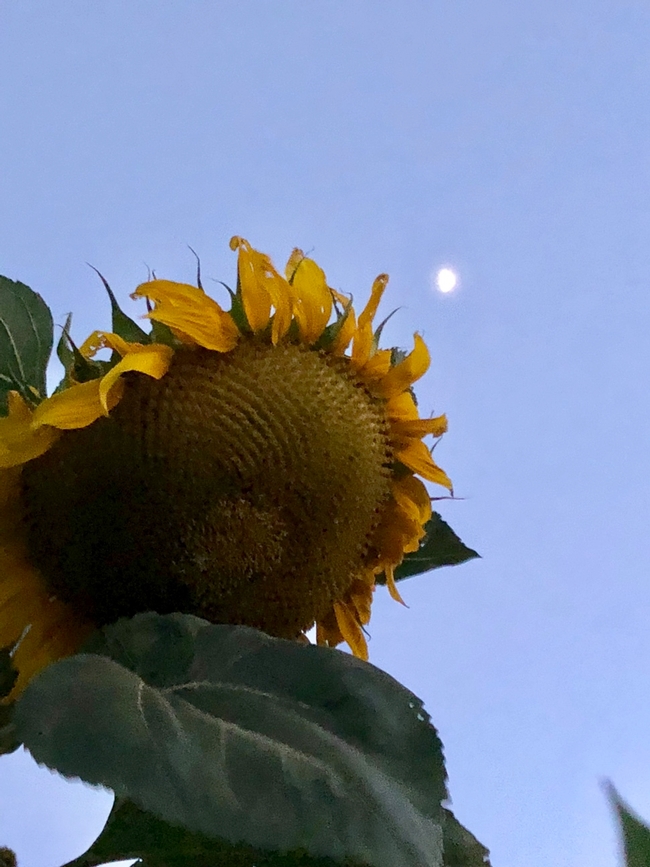
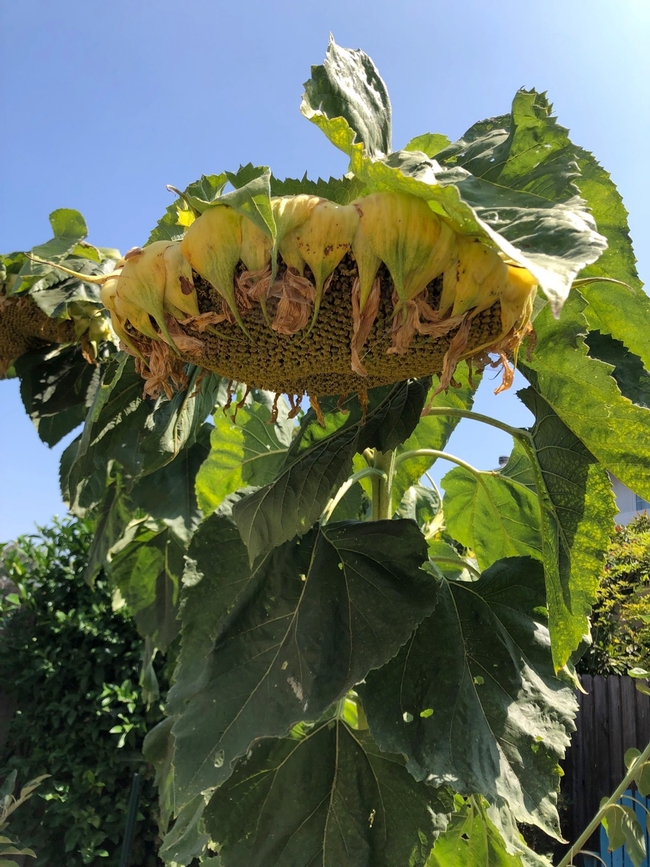
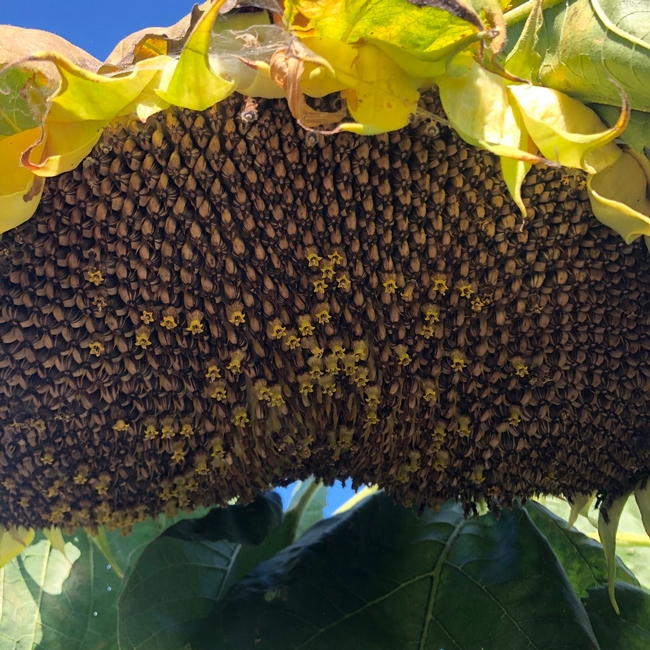
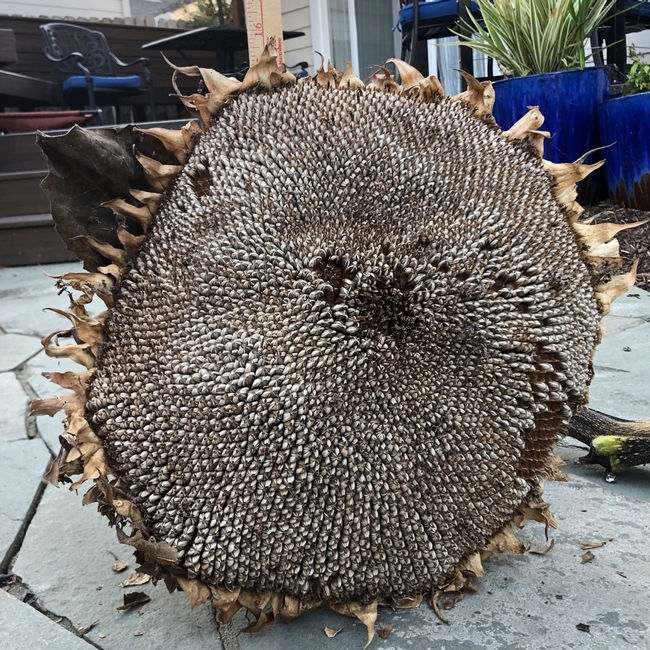
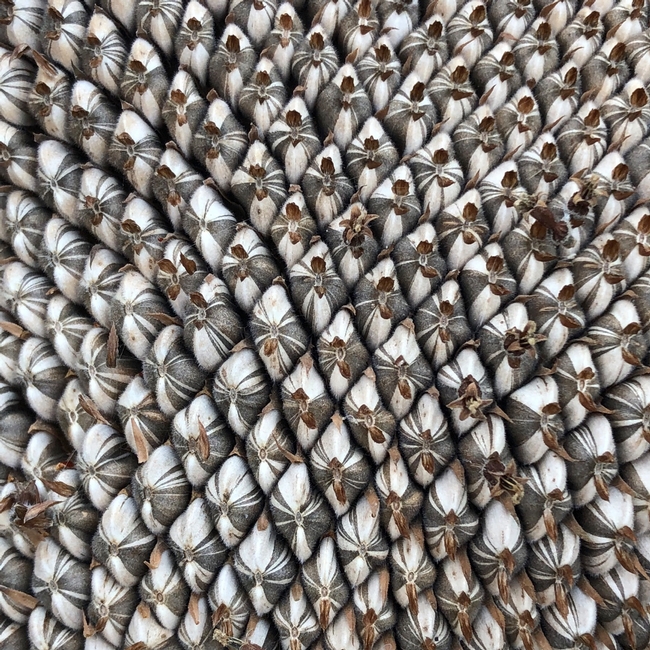
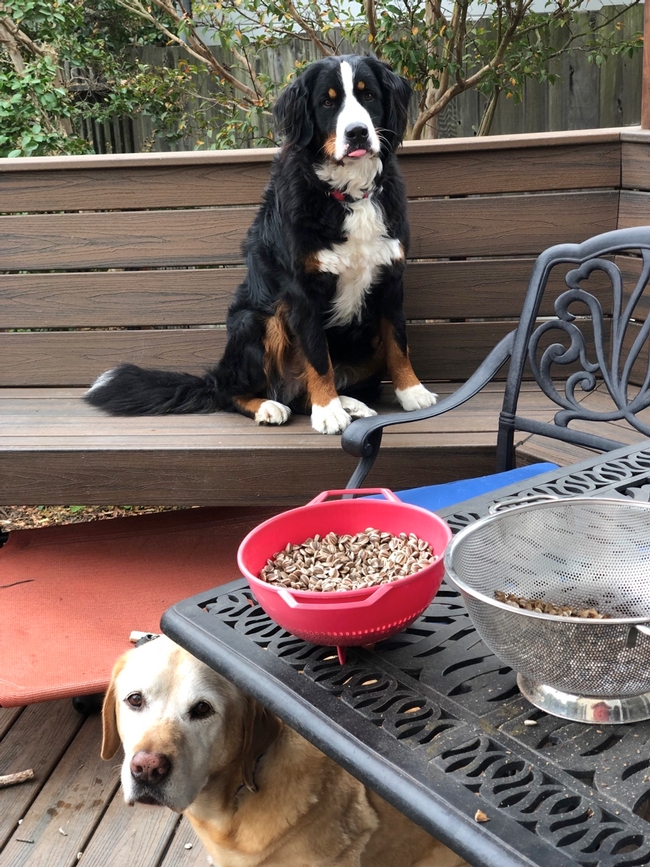
Posted by Brenda Altman on November 24, 2018 at 8:08 AM